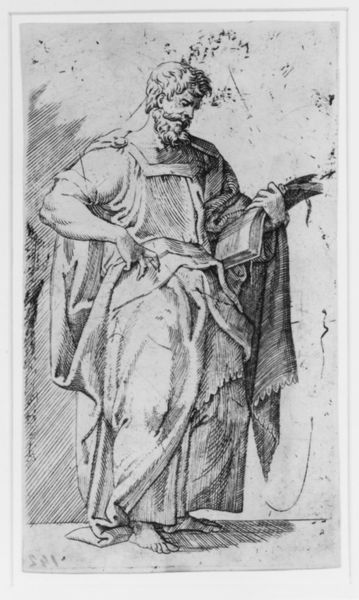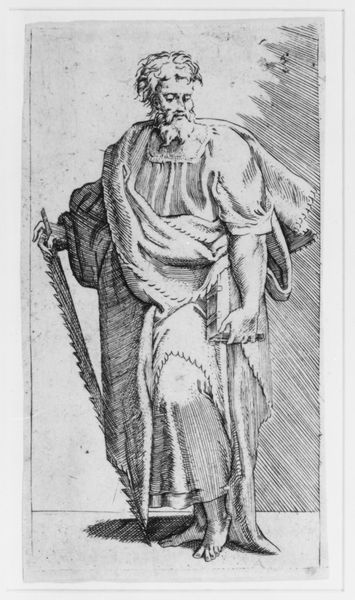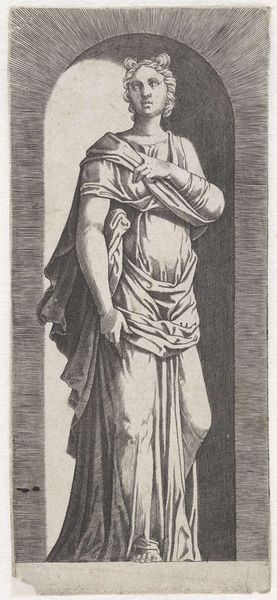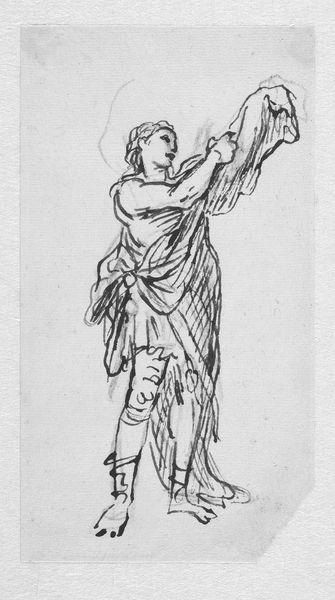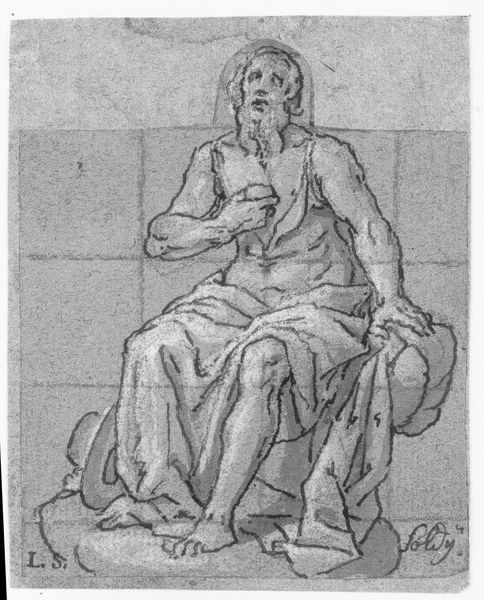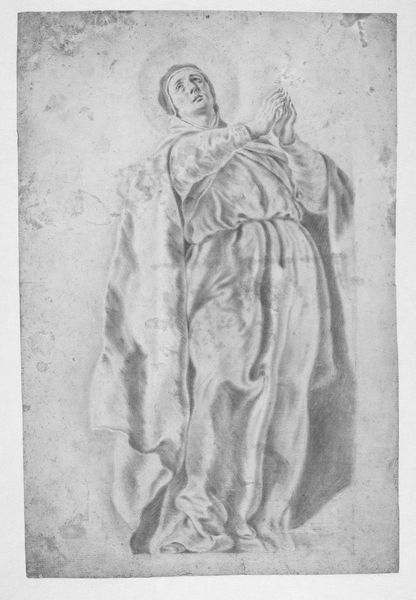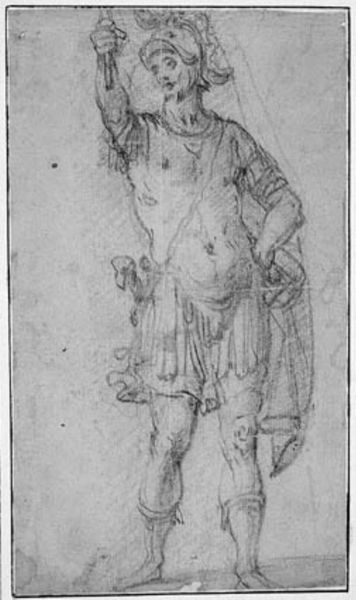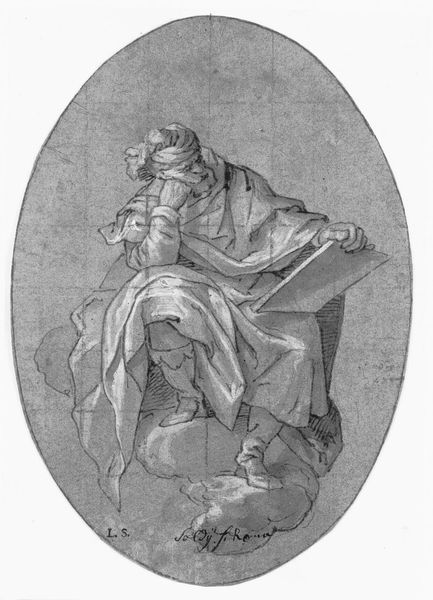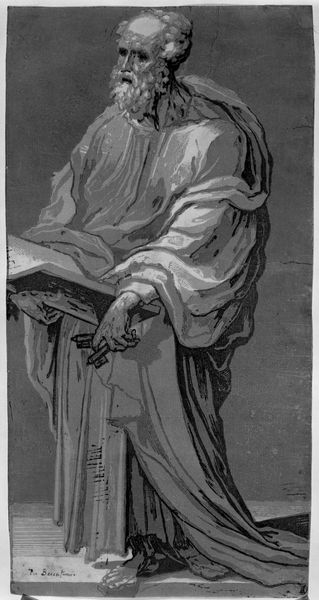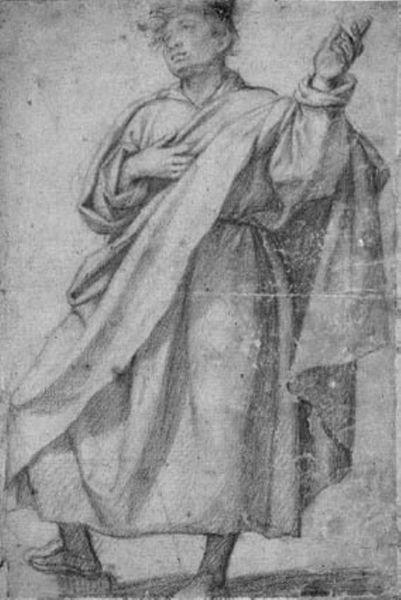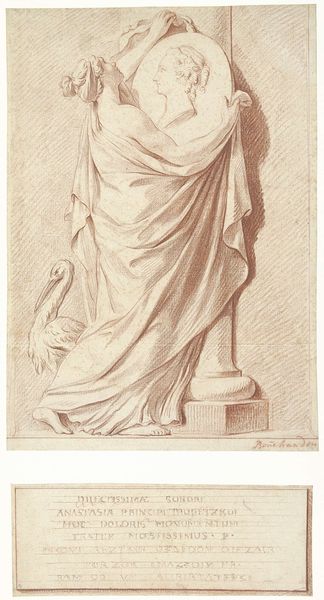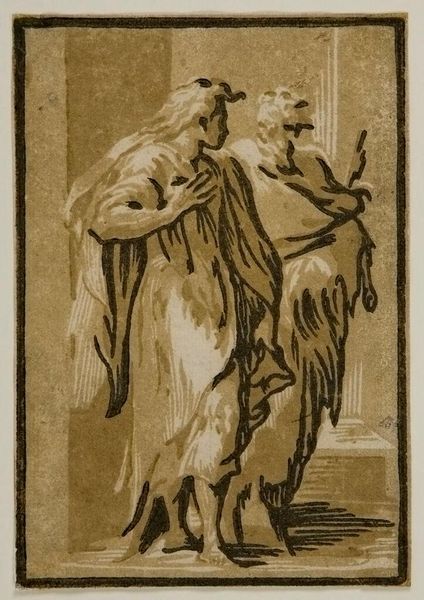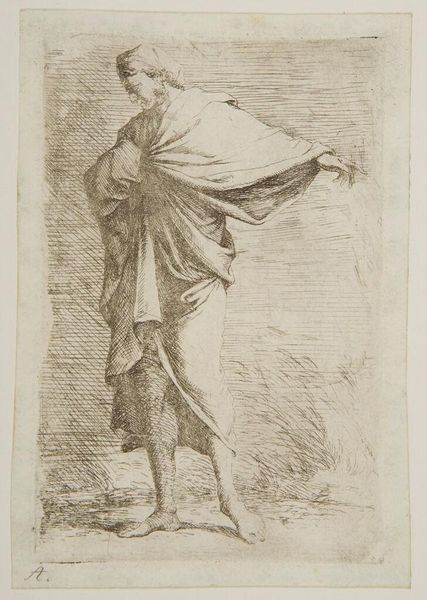
drawing, print, etching, intaglio, engraving
#
drawing
#
medieval
# print
#
etching
#
intaglio
#
figuration
#
cross
#
engraving
Dimensions: sheet: 4 1/2 x 2 5/8 in. (11.4 x 6.7 cm) (cut to picture)
Copyright: Public Domain
This image of St. John the Baptist was made by Battista Angolo del Moro sometime in the mid-16th century. It's an etching, meaning that the artist covered a metal plate with a waxy, acid-resistant coating, drew this composition into that coating, and then bathed the plate in acid. The acid bit into the exposed metal, leaving behind an incised image that could be inked and printed. The controlled erosion of metal, as a means of image production, has a direct connection to the era’s burgeoning industrial processes. It is a relatively indirect and industrialized way to produce an image, compared to drawing directly onto a surface. The lines are decisive, clearly defining form and shadow. Look closely, and you will notice the consistent direction and quality of the lines, reflecting the labor-intensive process of etching. Unlike a drawing, the design is not built up gradually through shading. Instead, it relies on careful planning and execution. This print reminds us that all art is born of specific materials and making processes, which in turn are tied to wider social and economic realities.
Comments
No comments
Be the first to comment and join the conversation on the ultimate creative platform.
